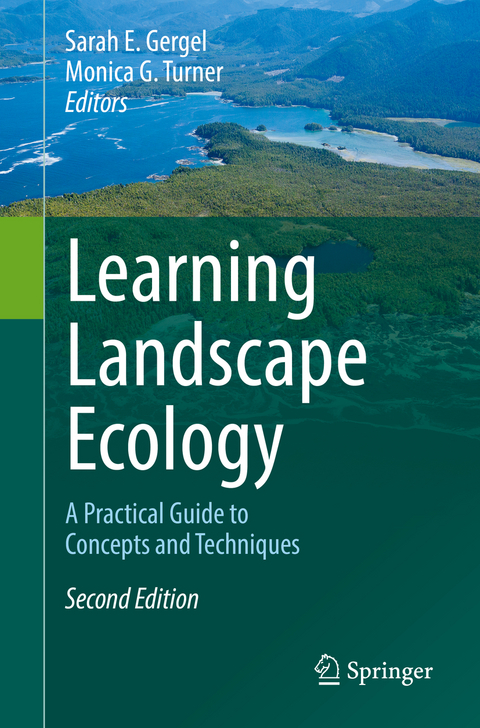
Learning Landscape Ecology
Springer-Verlag New York Inc.
978-1-4939-6372-0 (ISBN)
This second edition is purposefully more applied and international in its examples, approaches, perspectives and contributors. It includes new advances in quantifying landscape structure and connectivity (such as graph theory), as well as labs that incorporate the latest scientific understanding of ecosystem services, resilience, social-ecological landscapes, and even seascapes. Of course, as before, the exercises emphasize easy-to-use, widely available software.
http://sarahgergel.net/lel/learning-landscape-ecology/
Sarah E. Gergel Associate Professor of Landscape Ecology & Conservation Assistant Dean, Diversity & Inclusion Department of Forest & Conservation Sciences University of British Columbia Vancouver, BC Canada Monica G. Turner Eugene P. Odum Professor of Ecology and Vilas Research Professor Department of Zoology University of Wisconsin-Madison Madison, WI USA
Preface.- Acknowledgements.- Advice for Instructors.- Introduction to Remote Sensing.- Historical Aerial Photography for Landscape Analysis.- Citizen Science for Assessing Landscape Change.- Understanding Landscape Metrics.- Scale Detection with Semivariograms and Autocorrelograms (with R option).- Characterizing Categorical Map Patterns Using Neutral Landscape Models (with QRULE and R).- What Constitutes a Significant Difference in Landscape Pattern? (using R).- Modeling Landscape Change with Markov Models (with R option).- Simulating Management Actions and Their Effect on Forest Landscape Pattern (with Harvest Lite).- Regional and Continental-scale Perspectives on Landscape Pattern.- Using Spatial Statistics and Landscape Metrics to Compare Disturbance Mosaics (with GS+).- Assessing Multi-scale Landscape Connectivity Using Network Analysis.- Conservation Planning (with Marxan).- Advances in Quantifying Habitat Connectivity Using Graph Theory (with Conefor).- Linking Landscapes and Metacommunities (using R) Joseph R. Bennett and Ben Gilbert.- Modeling Spatial Dynamics of Ecosystem Processes and Services.- Heterogeneity in Ecosystem Services: Multi-scale Carbon Management in Tropical Forest Landscapes.- Regime Shifts and Spatial Resilience in a Coral Reef Seascape.- Understanding Land-Use Feedbacks and Ecosystem Service Tradeoffs in Agriculture.- Social Networks: Uncovering Social-ecological Mismatches in Heterogeneous Marine Landscapes.
“As with the previous edition, the volume is designed around teaching, including structured exercises and a very helpful guide to designing specific courses of study relating to applied aspects of landscape ecology, from conservation and forestry to sustainable management of landscapes and watersheds. It is also supported by free software and data, now provided online. If you study or teach landscape ecology, you need this book.” (Erle C. Ellis, The Quarterly Review of Biology, Vol. 93 (2), June, 2018)
| Erscheinungsdatum | 19.04.2017 |
|---|---|
| Zusatzinfo | 25 Illustrations, color; 39 Illustrations, black and white; XVIII, 350 p. 64 illus., 25 illus. in color. |
| Verlagsort | New York |
| Sprache | englisch |
| Maße | 155 x 235 mm |
| Themenwelt | Naturwissenschaften ► Biologie ► Botanik |
| Naturwissenschaften ► Biologie ► Ökologie / Naturschutz | |
| Naturwissenschaften ► Geowissenschaften ► Geografie / Kartografie | |
| Technik ► Umwelttechnik / Biotechnologie | |
| Schlagworte | landscape analysis • Landscape Change • spatial modeling • spatial resilience • spatial statistics • sustainable landscapes |
| ISBN-10 | 1-4939-6372-4 / 1493963724 |
| ISBN-13 | 978-1-4939-6372-0 / 9781493963720 |
| Zustand | Neuware |
| Informationen gemäß Produktsicherheitsverordnung (GPSR) | |
| Haben Sie eine Frage zum Produkt? |
aus dem Bereich


